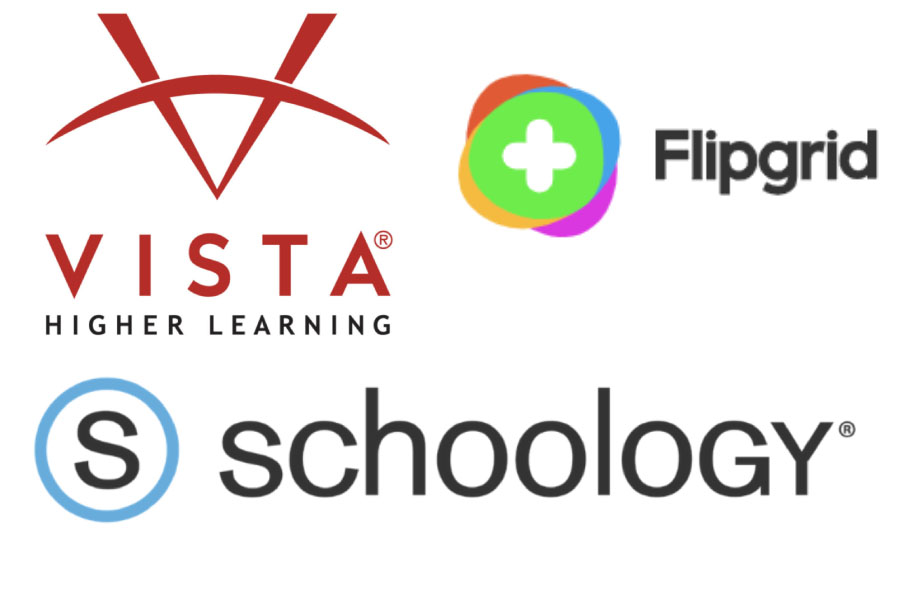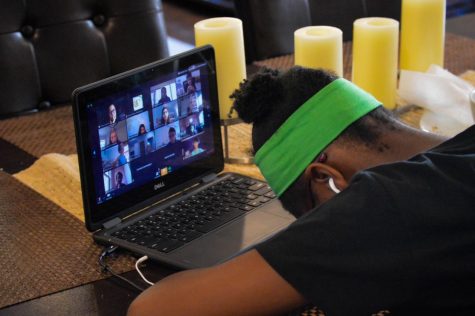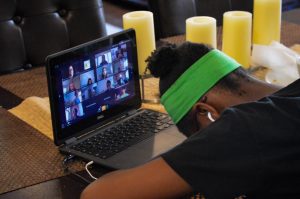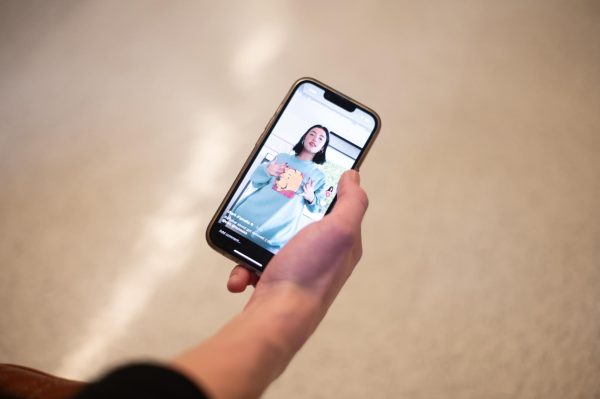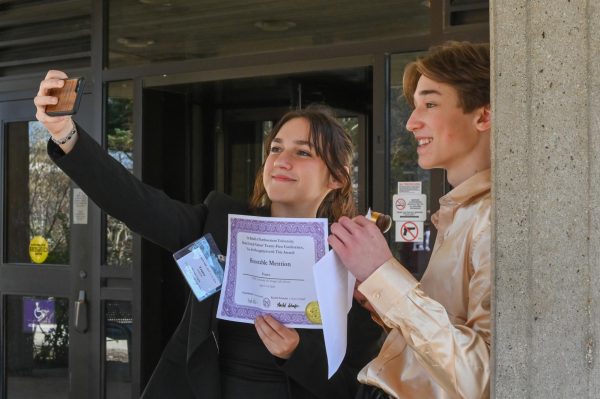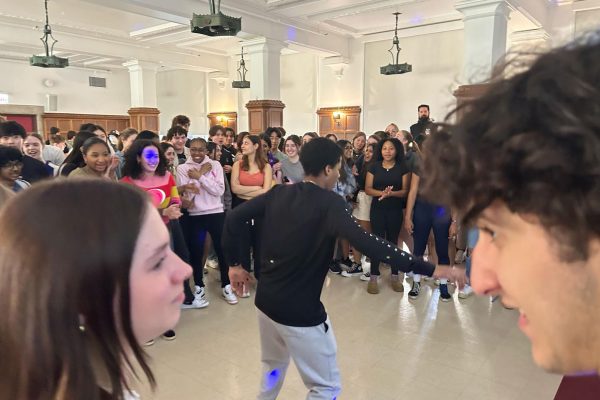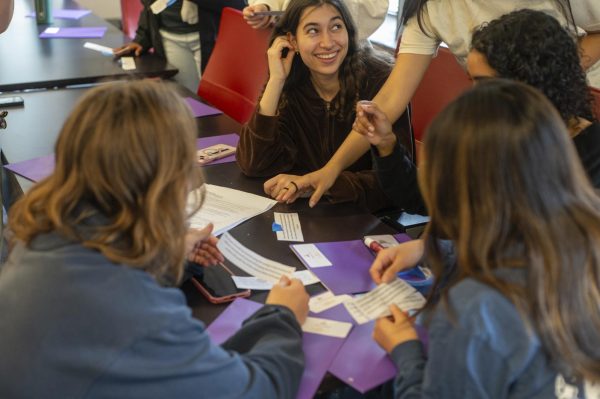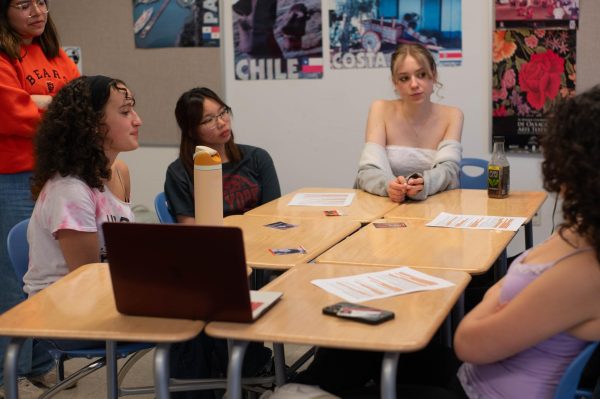Students balance multiple platforms while managing overwhelming workload
Schoology, Vista Higher Learning, Flipgrid
Students log onto sites including Vista Higher Learning, Schoology and Flipgrid to complete their assignments.
November 13, 2020
Schoology. Zoom. VHL Central. Flipgrid.
Enter username. Enter password. Next tab. Repeat.
While students are already struggling to balance and keep track of coursework, some U-High teachers have begun giving assignments on third-party platforms in an attempt to provide students with more interactive experiences. Even as more platforms are put to use, the responsibility of keeping track of assignments falls on the student.
Learning coordinator Laura Doto recognizes that students are already having difficulty keeping up with their assignments during remote learning.
“It’s not necessarily related to different platform use. I think it’s more related to an overwhelming sense of work,” Ms. Doto said.
Students have both synchronous class meetings and asynchronous work, which can be due at any point during the week.
Sophomore Grayson Smith said that while her work is typically due on days that she has a synchronous meeting, that is not always the case.
“I think the deadlines have been pretty manageable, but it is a little harder to motivate myself to do that work when it’s not due in class,” Grayson said. “It can also be hard if you want to ask questions about an assignment, but you don’t really have the class time to do so.
I think teachers individually can decide what they and their students can handle in terms of multiple platforms. I think as long as the teacher and the students understand what the expectations are, it will be OK.
Despite the overwhelming sense of work students are feeling, teachers continue to introduce new third party platforms, such as Flipgrid or VHL Central, that allow them to assign a broader range of activities than those offered by Schoology.
History department chair Naadia Owens has found using these platforms beneficial in keeping her students engaged.
“Some of us are using online textbooks, some of us are using different mechanisms for virtual learning, whether it be because it brings in an interactive portion or gives students the opportunity to interact with other students,” Ms. Owens said.
World language department co-chair Dinah D’Antoni said that using online textbooks and activities isn’t new.
“We have been using VHL [Vista Higher Learning] for a while for French and Spanish and German has incorporated it. Chinese classes use a different but similar platform online,” Ms. D’Antoni said. “With online learning, the platforms have been updating to make them more interactive.”
She finds that these textbook sites expand the range of activities a world language teacher can offer students.
“We can do everything there. We can do work that we used to do in the world language lab on these platforms. We can also administer quizzes and tests,” Ms. D’Antoni said.
She said that sometimes it is more work for the teachers, as some activities are graded automatically by the website.
“We as teachers have to go and review the grades,” Ms. D’Antoni said. “We also have rubrics we use to grade the activities that are open like pronunciation, presentation and writing.”
Ms. Doto emphasized the importance of using Schoology as a central platform. Without the use of a central platform, it is much harder for students to keep track of work.
“My understanding is that most of the third-party sites teachers are using are integrated into or are compatible with Schoology,” Ms. Doto said.
The responsibility of keeping track of their assignments seems to have fallen on the students.
Ms. D’Antoni said that students need to be the masters of their own scheduling and create their own systems.
At the beginning of the school year, the faculty implementation team recommended that teachers put all assignments on the Schoology calendar in addition to their weekly plans.
“I do know it’s particularly helpful for students to see their assignments in the Schoology calendar, which is something that the faculty implementation team recommended and suggested to the full faculty as part of our summer work,” Ms. Doto said.
Yet Ms. Doto estimates that only 80-85% of teachers are using the calendar.
Since many of her teachers choose not to use the Schoology calendar, sophomore Sara Charles Waterstraat said she takes time to organize her assignments herself.
“I’m not sure if my teachers put anything on the Schoology calendar, certainly not all of my teachers,” she said. “I find that unreliable, so I spend time each Monday filling out my own planner. Doing this, it’s much easier to keep track of my assignments, but I imagine I would miss things otherwise.”
Ms. Owens emphasized the importance of communication between students and their teachers.
“I think teachers individually can decide what they and their students can handle in terms of multiple platforms,” Ms. Owens said. “I think as long as the teacher and the students understand what the expectations are, it will be OK.”



